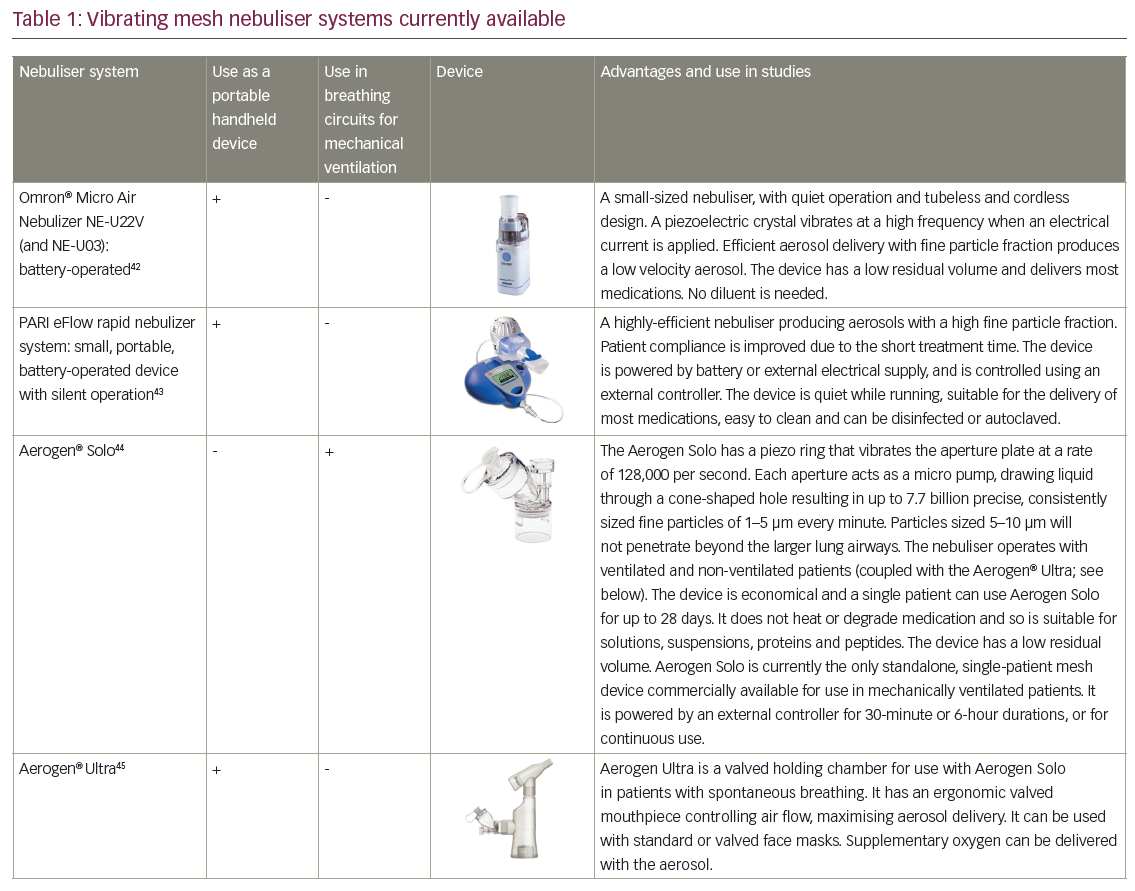EUROPEAN RESPIRATORY & PULMONARY DISEASES – VOLUME 4 ISSUE 1 – SUMMER 2018
Welcome to this year’s edition of European Respiratory & Pulmonary Diseases introduced by Editorial Board member Andrea Aliverti.Expert interviews with Peter Barnes, Mario Cazzola, Kian Fan Chung and Jean-Pierre Zellweger touch on recent advances in asthma management, use of triple therapy in COPD, cough hypersensitivity syndrome and latent tuberculosis infection, respectively. In an editorial, Refika Ersu explores the challenging diagnostic and treatment options for children with obstructive sleep apnoea. Also featured are three interesting review articles that address alpha 1-antitrypsin deficiency, a rare congenital cause of emphysema (Thabut and Corda), paediatric inducible laryngeal obstruction (Soares, Rodrigues and Morais-Almeida), as well as the use of vibrating mesh nebulisers as a mode of drug delivery in respiratory disease (Ehrmann).Across the various expert interviews, editorial and review articles, we hope there’s something of clinical relevance for you to enjoy. We are now accepting submissions for our 2019 edition and welcome enquires through our submission site here.
Foreword
Welcome to the summer edition of European Respiratory & Pulmonary Diseases. This journal describes current practices and recent advances that directly affect specialists in the diverse field of respiratory medicine, as well as being of interest to the wider biomedical community. Our expert interviews have become a popular feature of our journals, and this edition […]
Expert Interviews
Q. What are the limitations of current reliever medications in mild asthma? By far the most commonly used reliever medications in asthma are short-acting beta agonists (SABA) such as salbutamol and terbutaline. While these give rapid relief of symptoms, they don’t reduce the underlying inflammation of asthma. In fact, there is evidence that overuse of […]
Q. What are the limitations of dual therapy in COPD? I advocate the need to start treatment of COPD as soon as the diagnosis is made. LABA/LAMA (dual bronchodilation) should be employed in order to optimise bronchodilation. After having maximized bronchodilator treatment with LABA/LAMA regimens, and only in patients with more symptomatic GOLD group D […]
Q. What is the difference between chronic cough and cough hypersensitivity syndrome? Chronic cough is a clinical condition that is defined as cough lasting for at least 8 weeks.2 This definition is used to enable clinicians to trigger a series of steps to diagnose any underlying conditions that may be causing the cough, for example […]
Q. How prevalent is latent tuberculosis infection around the world? LTBI is the stage at which a person has been infected by M. tuberculosis but has not developed the disease. These people develop an immune reaction which can be detected by an indirect test (tuberculin skin test or interferon-gamma release assay), but have no symptoms […]
Editorial
The European Respiratory Society (ERS) taskforce on the diagnosis and management of obstructive sleep disordered breathing (SDB) in childhood, defined obstructive SDB as “a syndrome of upper airway dysfunction during sleep, characterised by snoring and/or increased respiratory effort secondary to increased upper airway resistance and pharyngeal collapsibility”.1 In this statement, two technical definitions of obstructive […]
Reviews
Highlights Alpha 1 antitrypsin (AAT) deficiency (AATD) is a rare genetic risk factor that predisposes an individual to develop early-onset emphysema. It occurs most commonly in people of European heritage. Accurate diagnosis of severe AATD, including those cases associated with rare genotypes, is an important goal of clinical care as it facilitates early intervention. Despite this, AATD is […]
Aerosol administration of drug therapies is a well-established and increasingly important delivery method for patients with acute or chronic respiratory conditions, especially for those receiving critical care. Aerosol therapies are now given to one-quarter of critically ill patients and one-fifth of ventilated patients, and they are widely used in chronic respiratory conditions, particularly chronic obstructive […]
Inducible laryngeal obstruction (ILO), previously designated as vocal cord dysfunction (VCD), is characterised by a transient and reversible narrowing of the larynx in response to external triggers, resulting in symptoms such as cough, dyspnoea and noisy breathing.1,2 Adduction of the vocal folds usually occurs in inhalation but can also happen in exhalation, restricting movement of […]

Trending Topic
Respiratory syncytial virus (RSV) is a ubiquitous virus that causes annual epidemics of infection in young children in all parts of the world. In temperate regions, epidemics are seasonal, and predictable during the winter months. Approximately half of all infants develop their first RSV infection prior to their first birthday. By 24 months of age, […]
Journal Archive
European Respiratory & Pulmonary Diseases is a peer-reviewed, free-to-access, annual journal comprising review articles, case reports, practice guides, theoretical discussions, and original research. It features balanced and comprehensive articles written by leading authorities, addressing the most important and salient developments in the field of respiratory.
Latest articles videos and clinical updates - straight to your inbox
Log into your Touch Account
Earn and track your CME credits on the go, save articles for later, and follow the latest congress coverage.
Register now for FREE Access
Register for free to hear about the latest expert-led education, peer-reviewed articles, conference highlights, and innovative CME activities.
Sign up with an Email
Or use a Social Account.
This Functionality is for
Members Only
Explore the latest in medical education and stay current in your field. Create a free account to track your learning.









